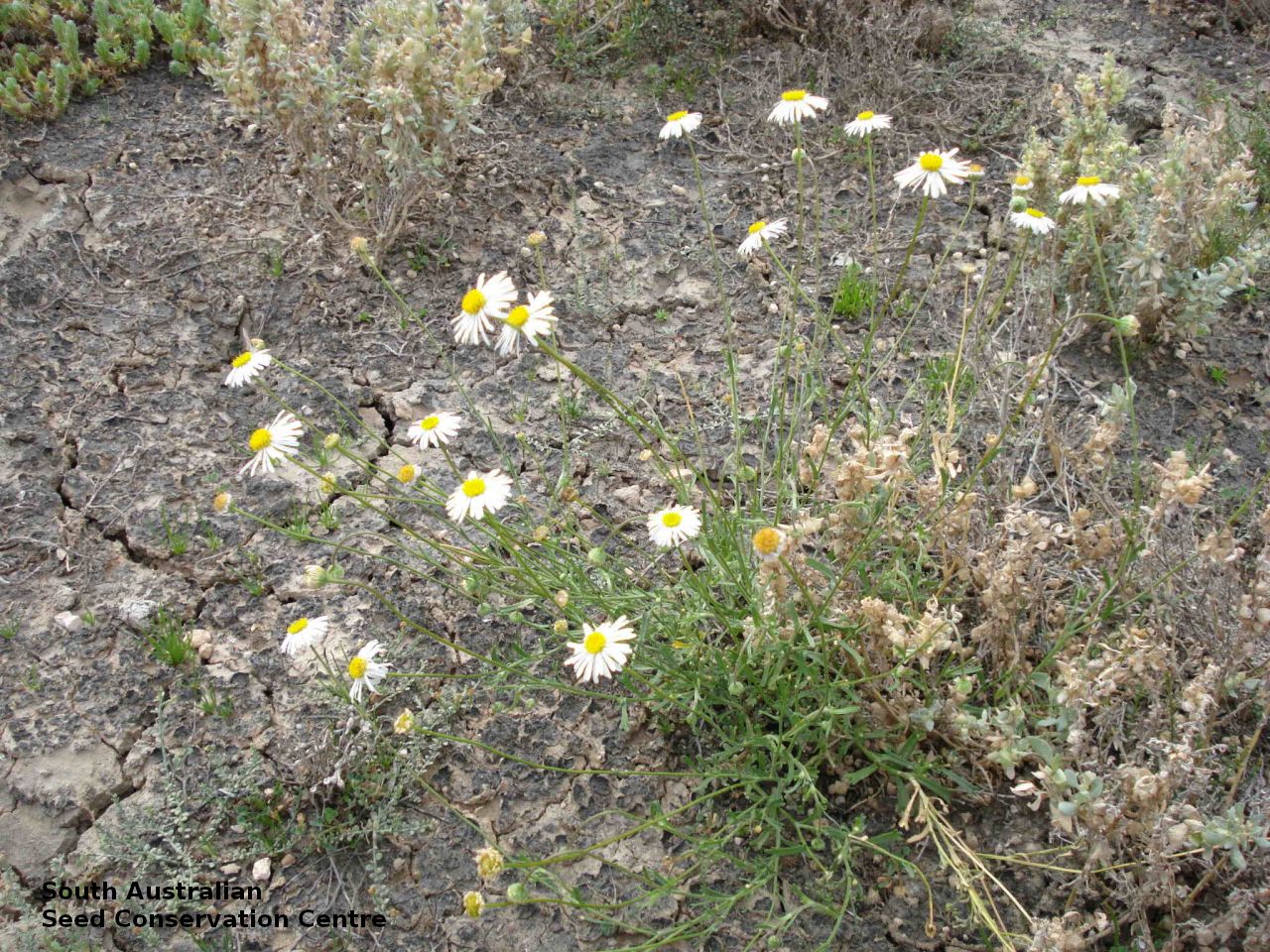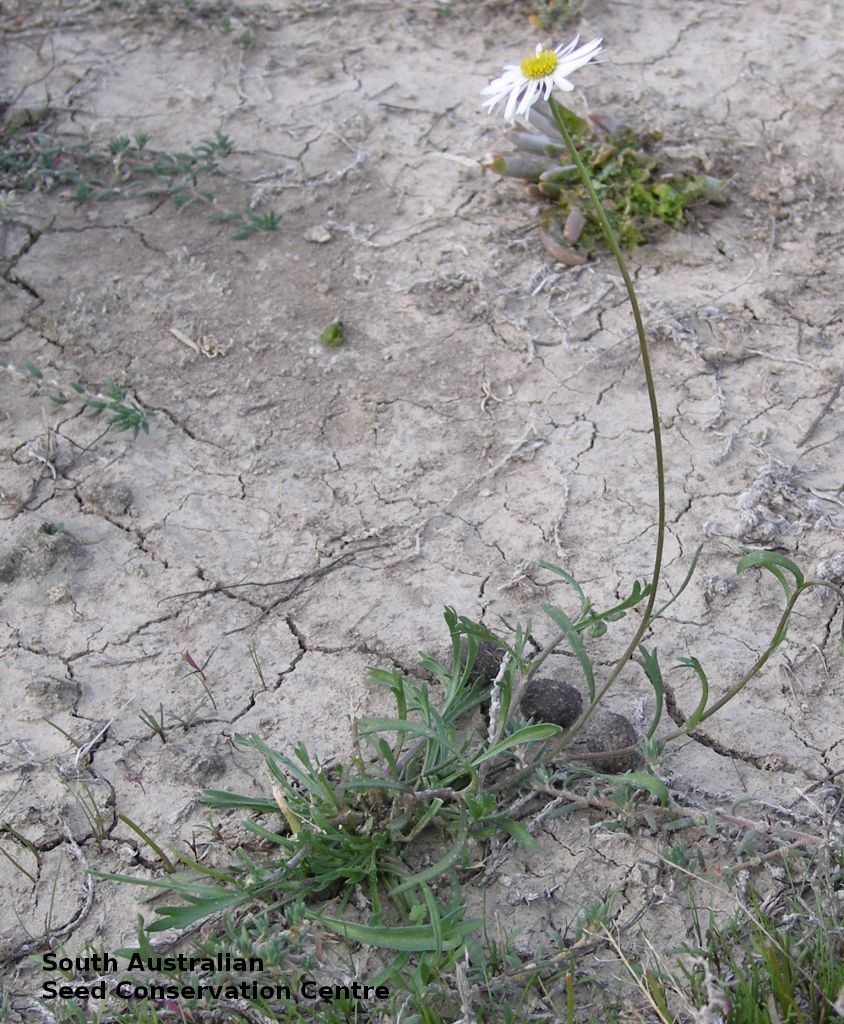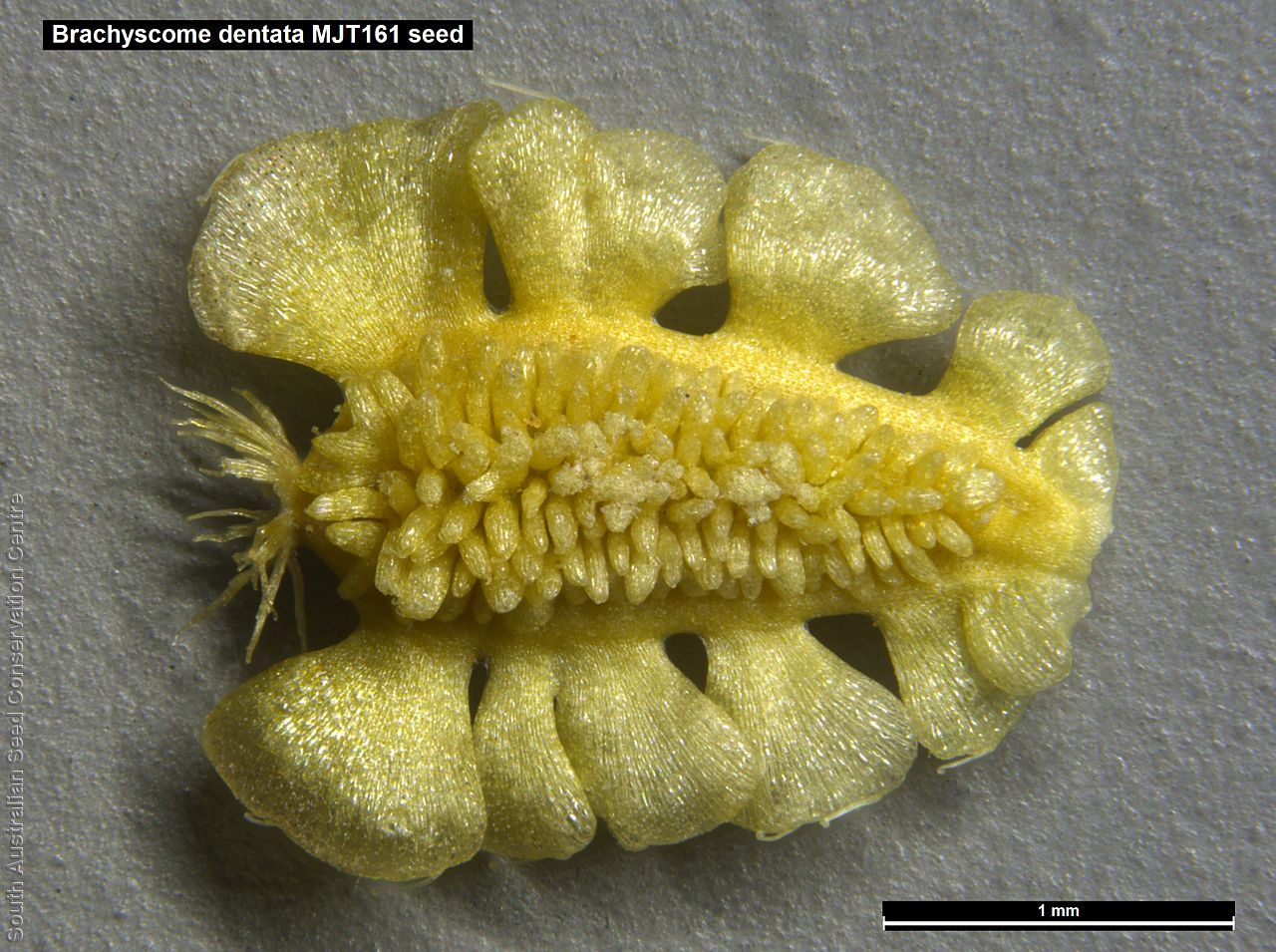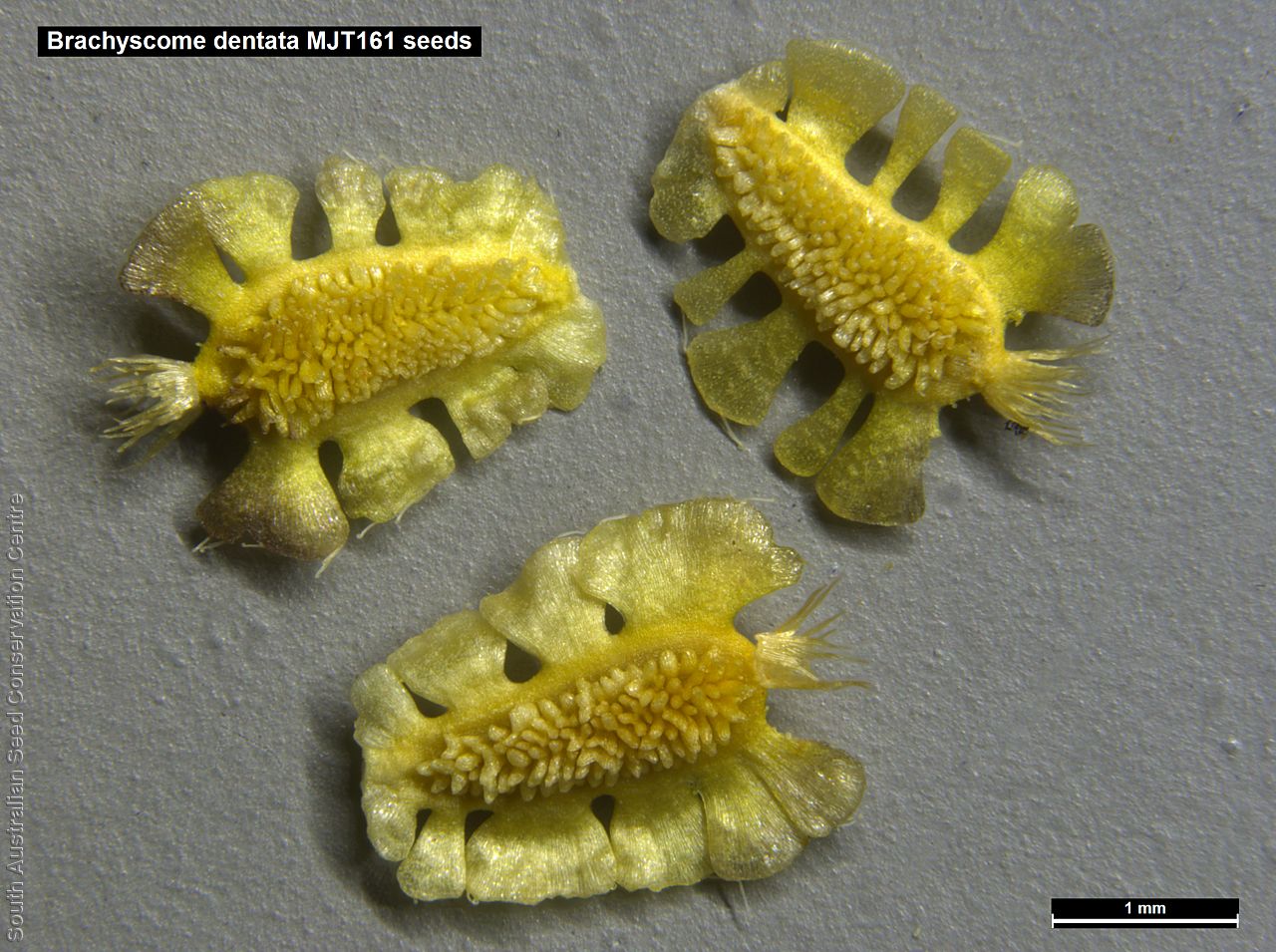











Botanical art
Prior names
Brachycome marginata
Brachycome heterodonta
Brachycome chrysoglossa
Brachycome calocarpa
Brachycome dentata
Common names
Toothed Daisy
Lobe-seed Daisy
Etymology
Brachyscome from the Greek 'brachys' meaning short and 'kome' meaning hair; referring to the tuft of short bristles or hairs of the pappus. Dentata from the Latin 'dens' meaning tooth, referring to the tooth-like margin of the seed.
Distribution and status
Found on the eastern side of South Australia, from Strzeleki to Murray Bridge, growing in heavy clay flood plains, sand plains and grassland. Also found in Queensland, New South Wales and Victoria. Native. Common in South Australia. Common in the other States.
Herbarium regions: Lake Eyre, Flinders Ranges, Eastern, Northern Lofty, Murray, South Eastern
NRM regions: Adelaide and Mount Lofty Ranges, South Australian Arid Lands, South Australian Murray-Darling Basin, South East
AVH map: SA distribution map (external link)
Plant description
Perennial herb to 50 cm high with a woody rootstock. Leaves are extremely variable in shape, usually linear to wedge-shaped with 3 teeth at he tip but can have up to 13 teeth around the margin. Large white daisy appearing between June and November. Fruits are brown daisy-heads. Seeds are flat yellow seed to 3 mm long and 2 mm wide, with deeply tooth winged margin, tubercule face and short pappus at one end. Seed embryo type is spatulate fully developed.
Seed collection and propagation
Collect seeds between February and October. Pick heads that are maturing, drying off, with brown seeds that dislodge easily. Place the seed-heads in a tray and leave to dry for a week. Then gently rub the heads by hand to dislodge the seeds. Use a sieve to separate the unwanted material. Store the seeds with a desiccant such as dried silica beads or dry rice, in an air tight container in a cool and dry place. From three collections, the seed viability was high, ranging from 85% to 100%. This species may have physiological dormancy that needs to be overcome for the seed to germinate.Winter produces high germination. Potassium nitrate, smoked water, and gibberellic acid can improve germination..
| Location | No. of seeds (weight grams) | Number of plants | Date collected | Collection number Collection location | Date stored | % Viability | Storage temperature |
|---|---|---|---|---|---|---|---|
| BGA MSB | 22,500 (6.4 g) 22,500 (6.4 g) | 100+ | 22-Oct-2008 | MJT161 Eastern | 1-Jun-2010 | 90% | -18°C |
| BGA | 13,000 (4.95 g) | 50+ | 15-Jun-2010 | KHB424 Flinders Ranges | 1-Jan-2012 | 85% | -18°C |
| BGA | 29,700 (7.96 g) | 21-Oct-2008 | DJD1081 Eastern | 1-Jan-2012 | 100% | -18°C | |
| 25+ | 21-Oct-2008 | DJD1081 Eastern | 1-Nov-2017 | 100% | -18°C |
Number of plants: This is the number of plants from which the seeds were collected.
Collection location: The Herbarium of South Australia's region name.
% Viability: Percentage of filled healthy seeds determined by a cut test or x-ray.